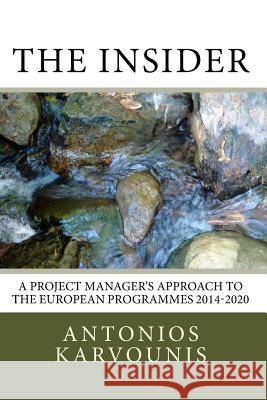The Insider: A Project Manager's Approach to the European Programmes 2014-2020 » książka
The Insider: A Project Manager's Approach to the European Programmes 2014-2020
ISBN-13: 9781503399525 / Angielski / Miękka / 2015 / 482 str.
The new EU Programming Period 2014-2020 holds lots of opportunities to fund innovative ideas and projects. The architecture of European direct grants (European competitive programmes) continues to offer a wide range of funding opportunities in the EU member states but also a series of obligations for the beneficiaries and project coordinators during the whole project life cycle. Dr. Antonios Karvounis, a certified Project Manager (PMP(r)), member of management and evaluation committees (since 2006), national contact point, trainer and expert on European Programmes at the Hellenic Ministry of Interior, analysing all the stages of the EU funded Project life cycle in the framework of the project management standards and terminology of Project Management Institute's (PMI) PMBOK(r) Guide - the globally recognized standard and guide for project management profession - provides the EU project coordinators, work package leaders and beneficiaries with all those tools needed to prepare, submit and manage proposals for sustainable EU funded projects. It is understandable that one may not employ all the project management tools while managing EU funded projects - especially those with low budget. Yet, ignoring entirely aspects of project management may lead to a heavy loss or misuse of resources, wrong decisions on selecting the proper partners, imprecise definition of the project scope, inaccurate activity duration and so on. Competitive bidding for funds, which is the main focus of this book, is often not used effectively or it may be denied due to poor planning. To compete, you need a good idea of what you can offer the funder and how you can integrate a call for projects into your own plans. The challenge becomes to identify priorities that you and the funding institutions (that is, the European Commission agencies) have in common. If you are to maintain your own vision, this is crucial. Otherwise, your organisation risks being a mere "implementing agency" for other people's ideas and policy. So, knowledge about opportunities for financing within different EU competitive programmes, procedures and knowledge is essential for development of project proposals, as well as knowledge and best practices for management of EU projects, which are usually distributed, complex, multinational and multicultural. Hopefully, the book's approach will make it a useful management tool for many EU funded proje
Zawartość książki może nie spełniać oczekiwań – reklamacje nie obejmują treści, która mogła nie być redakcyjnie ani merytorycznie opracowana.











